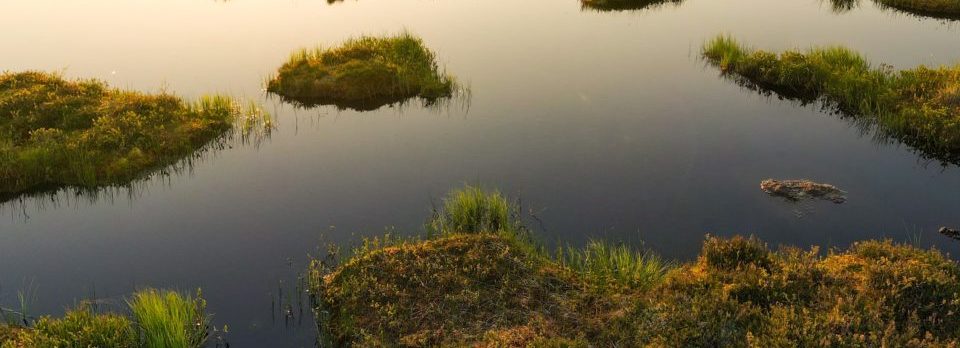This year’s theme for World Wetlands Day is “restoration”. This comes at a critical moment in Europe for unlocking the superpowers of wetlands. Large scale restoration is urgently needed to match the ambitions of the European Green Deal and solve our interlinked crises of climate change and nature loss. A proposed Nature Restoration Law in the EU has the potential to be a game changer for dramatically boosting restoration – but needs to be strengthened to deliver on its promise.
Wetlands connect land and sea: coastal salt marshes, seagrass meadows and tidal mudflats link to rivers and streams that are fed by upstream lakes, bogs and floodplains. This system of water running from “source to sea” holds many of the keys to achieve the European Green Deal’s goal to transform the EU into a prosperous, carbon neutral society with a healthy environment.
Inland and coastal wetlands are, by several orders of magnitude, the most valuable ecosystems on the planet when it comes to the services they provide. They supply water, food and livelihoods to millions of people. Restoring these landscapes means reviving the many services and benefits that have been lost or damaged in previous decades, such as carbon storage, water filtration, flood prevention and habitat for animals and plants.
Wetlands are planetary superheroes for nature: 40% of the world’s plants and animals are found in wetlands, and more than a million threatened species depend on wetlands for their survival. In Europe, our wetlands home to a rich abundance of life such as dolphins, flamingos, otters, eels and salmon.
And wetlands are unmatched when it comes to storing carbon. Mangroves are known to store four times the amount of climate-harming carbon dioxide as rainforests. The salt marshes, seagrass meadows, tidal mudflats and peatlands – carbon-rich wetlands with a thick water-logged organic soil layer – that cover much of Europe are not far behind and are essential for meeting the EU and global target of net-zero carbon emissions.
The benefits of wetlands for climate are not limited to storing carbon. They are superheroes that absorb water and release it slowly, serving as natural sponges that help society adapt to a rapidly warming climate by increasing safety, food security and well-being in the face of extreme floods, droughts and fires.
The restoration and protection of Europe’s wetlands is especially urgent. Wetlands comprise about 2% of the EU’s territory (and about 12.5% of the European continent) and are among the most threatened ecosystems – with an estimated 35% loss since 1970, a rate of loss three times faster than forests.
The challenge is monumental and the hardest work is just getting started – restoration on a scale and at a speed we’ve never seen before. The good news is that the superhero potential of wetland landscapes is finally being recognised. This year, a proposed Nature Restoration Law is being debated within the EU. Enacting this law would be the strongest step yet to halt and reverse the loss of wetlands. Some of the biggest restoration challenges a restoration law would help with, include:
- The EU is the second largest global emitter of greenhouse gas emissions from drained peatlands and they contribute 25% of total emissions from EU agriculture.
- Migratory freshwater fish populations have collapsed 93% since 1970 in Europe
- 70-90% of Europe’s floodplains are degraded
- 60% of monitored rivers, lakes and waters are currently in bad condition
The initial proposal is a welcome first step that targets the restoration of at least 30% of EU land and sea by 2030. But to live up to its European Green Deal ambitions, the goals for peatland restoration must be strengthened for the EU to meet its climate target.
One of the greatest superpowers of peatlands (as with most wetlands) is their ability to simultaneously take on multiple challenges and deliver multiple benefits. Therefore, restoring and conserving peatlands by rewetting drained soils offers low-cost and no-regret solutions to store carbon, improve resilience to costly floods, droughts and fires, purify water and protect biodiversity.
Reconnecting freshwater ecosystems is the first requirement to bring back the natural functions of rivers, lakes and wetlands across our continent. Free-flowing rivers are healthy, biodiverse, provide clean and sufficient water supply and adapt to the consequences of increasingly frequent climate change related episodes, like droughts or floods.
So on World Wetlands Day, let’s take a moment to celebrate these vital natural assets while accelerating their restoration to unlock nature-based solutions to our most pressing challenges.

